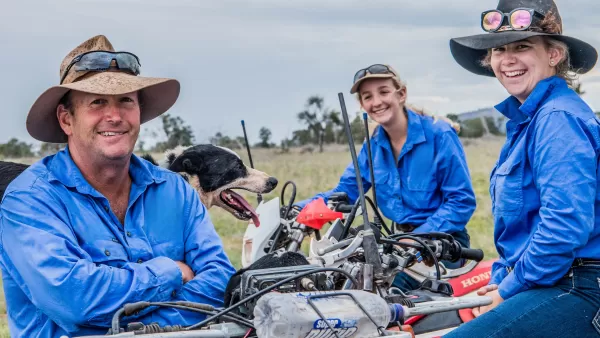Central Queensland Irrigation Farm
Energy Savings: 76% | Cost Savings: NA | CO2 Savings: 12.1 | Project Status: proposed
Industry:
Grains and fodder, Beef
Location:
Fitzroy
Pump Type:
Centrifugal
Irrigation Type:
Not applicable
Technology:
Irrigation and Pumps, Solar Power and Renewables
Two grid-connected solar PV systems have been recommended: a 10kW and 5kW solar system have the potential to reduce consumption and costs by 15,130kW, and $4,349 per annum as shown at table 2.
The audit considered various standalone options to replace a permanent electricity supply point at a creek pumping site to allow the pumps to operate off-grid once the grid connection is removed.
The off-grid replacement systems analysed were (Table 2):
- Hybrid solar/battery system;
- Hybrid 15kW solar/diesel system;
- Installation of a genset;
- Installation of a diesel engine;
- Installation of a 7kW solar system to operate the smaller transfer pump.
The creek pump only operates during periods of flow occurring once every two to three years, filling a 200ML storage dam and consuming approximately 8,400kWh.
Table 1. Audit recommendations showing energy, cost savings and payback period.
| Reccomendation | Energy Savings (kWh) | Cost Savings ($) | Payback Period (Years) |
| Solar Systems 10kW and 5kW (Combined) | 15,130 | 4,349 | 3.9 |
Table 2: Potential off-grid replacement systems
| Alternative Energy Source Options | |||
| Hybrid Solar/Battery | 9,200 | 2,472 | 120 |
| Hybrid Solar/Diesel | 9,200 | 30.86 | 2,085 (not a typo) |
| Installation of Genset
|
8,400 | 668 | 25.9 |
| Installation of diesel engine creek | 8,400 | 668 | 25.9 |
| Installation of 7kW Solar on the transfer pump
|
800 | 215 | 72.3 |
The audit considered the following matters surrounding genset operation when designing to match the creek pump:
- In-rush current: normal operation of the pump requires 38kVA, however start-up requires 111kVA, with a 129kVA genset therefore being recommended to cover the load.
- Once the pump is started the genset load returns to around 12 per cent. With a recommended operating load of between 70-80 per cent there is a risk that glazing will occur on the cylinders leading to increased operating costs and potential failure of the equipment.
These constraints surrounding the normal functioning of the genset meant the best option available would be the installation of a diesel engine, showing a comparative 25.9-year payback.
It’s important to note that the payback period may not be a valid measure in this case as it is proposed to remove the grid connection and although there is longer payback period, an energy and cost saving will be realised.
Consuming 30,893kWh per annum with 2300 head of cattle sees the farm using 13.43kW/head.
By implementing recommendations in the audit, the site has the potential to reduce energy use and the kWh/unit of production by 76 per cent, as well as CO2 emissions by 12.1 tonnes.
Table 3. Pre and Post Audit, and kWh/unit of production.
| Metric | Pre-Audit | Post Audit |
| Energy Consumption (kWh) | 30,893 | 7,363 |
| Energy Costs ($) | 12,030 | 7,013 |
| kWh/unit of production | 13.43 | 3.20 |
An energy audit is a good investment
An energy audit is a great way for a business to cut costs and boost productivity.
The Energy Savers Plus Extension Program was delivered in by the Queensland Farmers' Federation with support and funding from the Queensland Department of Energy and Public Works.

